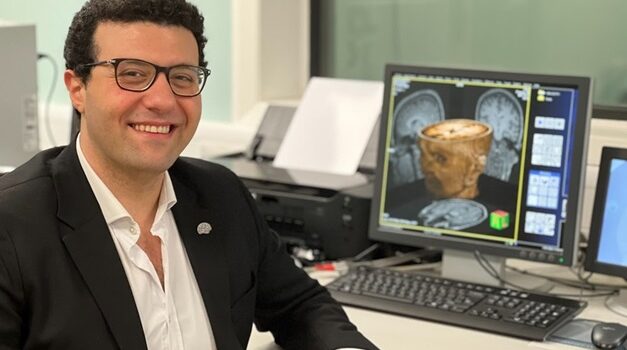Congratulations to Moataz Assem from the MRC Cognition and Brain Sciences Unit, University of Cambridge (MRC CBU), who has been awarded the prestigious Wellcome Trust Early Career Award. The award, totalling over £800k, is for five years to investigate working memory brain circuits at the MRC CBU. Moataz’s research aims to understand how we “actively” focus on limited information while also maintaining a broader “hidden” cognitive background. To this end, Moataz will utilize innovative combinations of advanced techniques such as transcranial magnetic stimulation (TMS), electrocorticography (ECoG), and precision functional MRI (fMRI), alongside anatomical data from non-human primates. This multimodal approach holds significant implications for circuit-based clinical interventions. Moataz is collaborating with top institutions globally, including Northwestern University, Washington University in St. Louis, the Stem Cell and Brain Research Institute/INSERM in Lyon, and the University of Oxford.
Title: Bridging The Dual Facets of Working Memory: Causal Mapping of Active and Hidden States Using Brain Stimulation and Precision Imaging
Abstract:
In human cognition, working memory (WM) plays a pivotal role, allowing us to “actively” focus on limited information while also maintaining a broader “hidden” cognitive background. Active WM is well-studied and is a common target for mental health interventions. Despite its role in computational models, hidden WM remains elusive because it is not visible using traditional imaging methods. Building upon my imaging work precisely delineating active WM circuits, and recent advances in methods for making hidden circuits visible, I aim to develop a framework that captures both the active and hidden sides of WM. First, I will innovatively combine transcranial magnetic stimulation (TMS) concurrently with precision functional MRI (fMRI) to visualize hidden WM circuits. Second, I will integrate intracranial electrode recordings and stimulation with precision fMRI to causally map the fast dynamics of WM states. Third, I will elucidate the intricate anatomical wirings of WM circuits, which are difficult to decipher in humans, by leveraging a novel anatomical dataset in non-human primates. These complementary approaches promise, for the first time, to reconcile active and hidden sides of a vital everyday cognitive process. Further, the unique combination of TMS, intracranial electrodes, and precision fMRI has important implications for circuit-based clinical interventions.

 MRC Cognition and Brain Sciences Unit
MRC Cognition and Brain Sciences Unit


